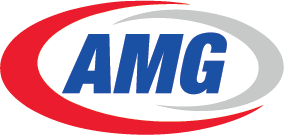The main step forward at the meeting was an agreement that the GHG Fuel Standard –a regulation limiting the well-to-wake GHG emissions of marine energy sources– will be set at a level to hit the IMO’s indicative checkpoints for reduced GHG emissions in 2030 and 2040 as well as the 2050 zero emissions target. The checkpoints call for a minimum reduction of GHG emissions by 2030 of 20%, striving for 30%, and by 2040 a minimum reduction of at least 70%, striving for 80%, compared to 2008 levels.
A readout of discussions at the meeting published by UMAS characterised the debate on shipping’s path to agreeing regulatory changes at next year’s MEPC 83 in spring as in its early stages.
Dr Tristan Smith, Director of UMAS and Associate Professor at UCL said: “It is hard to overstate the significance of what might be agreed in Spring 2025… Given this significance, ISWG-GHG 16 provides some important clues on where preferences are developing. However, this is still an early stage in the debate, with key evidence of the impacts and costs of different policy specifics expected this summer, and with so many interconnected moving parts, a ‘scenario’ view e.g. considering a range of scenarios of potential outcome is still needed.”
The task ahead for member states includes narrowing down the candidate options for the mid-term measures under the IMO GHG Strategy including the GHG Fuel Standard and an economic measure.
UMAS said there were three approaches with similar levels of support among member states:
– Firstly, a solution popular among middle income countries was a fuel standard which includes the flexibility of a credit trading mechanism or Emission Trading System (ETS), and no further GHG pricing mechanism such as a levy.
– Secondly, popular among Small Islands Developing States (SIDS) and Least Developed Countries (LDC) was a simplified fuel standard without flexibility in combination with a universal GHG price such as a levy.
– Finally, a a solution popular among develop economies was a fuel standard which includes the flexibility of a credit trading mechanism or ETS, coupled with a levy or other universal GHG pricing mechanism.
Differences remain over how the proceeds of revenue generating measures will be distributed, but these differences are to be expected at this stage of negotiations, said UMAS.
“Overall the meeting therefore has continued to progress the finalisation phase, albeit without a decisive shift in the landscape of positions and preferences, whilst also retaining progress in line with agreeing specifics at MEPC 83 in June – a commitment reiterated by member states with a range of different preferences on specifics,” said UMAS.




